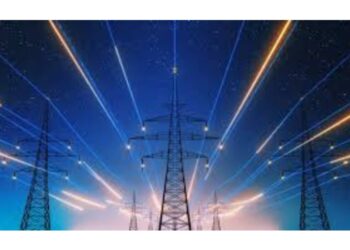The offshore wind energy industry is undergoing a transformative phase, marked by rapid technological advancements, increasing global demand for clean energy, and a growing commitment to combating climate change. As the world shifts toward renewable energy sources, offshore wind has emerged as a cornerstone of the green energy transition. With its vast potential to generate large-scale, reliable, and sustainable electricity, the industry is poised to play a pivotal role in achieving global decarbonization goals. Custom Market Insights (CMI) explores the latest innovations and trends shaping the offshore wind energy sector, highlighting how these developments are driving efficiency, reducing costs, and expanding the industry’s reach.
The Growing Importance of Offshore Wind Energy
Offshore wind energy has gained significant traction in recent years, with countries around the world recognizing its potential to meet rising energy demands while reducing greenhouse gas emissions. Unlike onshore wind farms, offshore wind turbines benefit from stronger and more consistent wind speeds, resulting in higher energy output. Additionally, offshore wind farms can be constructed in deeper waters and farther from shore, minimizing visual and environmental impacts on coastal communities.
According to recent reports, the global offshore wind energy market is projected to grow at a compound annual growth rate (CAGR) of over 12.1% in the next decade. This growth is fueled by supportive government policies, declining technology costs, and increasing investments from both public and private sectors. Europe has long been a leader in offshore wind, with countries like the United Kingdom, Germany, and Denmark spearheading development. However, other regions, including the United States, China, and Southeast Asia, are rapidly catching up, signaling a global shift toward offshore wind as a key energy source.
Technological Innovations Driving the Industry
One of the most significant factors contributing to the growth of the offshore wind industry is the continuous innovation in technology. These advancements are not only improving the efficiency and reliability of offshore wind farms but also reducing the levelized cost of energy (LCOE), making it more competitive with traditional fossil fuels. Here are some of the key innovations shaping the future of offshore wind energy:
1. Floating Wind Turbines
Traditional offshore wind turbines are fixed to the seabed, limiting their deployment to shallow waters. However, floating wind turbines are revolutionizing the industry by enabling installations in deeper waters, where wind resources are even more abundant. These turbines are mounted on floating platforms anchored to the seabed with mooring lines, allowing them to operate in water depths of over 60 meters. Countries like Norway, Portugal, and Japan are leading the way in floating wind technology, with several pilot projects already demonstrating its feasibility and potential.
2. Larger and More Efficient Turbines
The size and capacity of offshore wind turbines have increased dramatically in recent years. Modern turbines now boast rotor diameters of over 200 meters and capacities exceeding 15 megawatts (MW). These larger turbines can capture more wind energy, significantly boosting the overall output of offshore wind farms. Additionally, advancements in blade design, materials, and manufacturing processes have improved turbine efficiency and durability, further driving down costs.
3. Digitalization and Smart Grid Integration
Digital technologies are playing a crucial role in optimizing the performance of offshore wind farms. Advanced data analytics, artificial intelligence (AI), and machine learning are being used to monitor turbine performance, predict maintenance needs, and optimize energy production. Smart grid integration is also enhancing the reliability and stability of offshore wind energy, enabling seamless integration with existing power grids and improving energy storage solutions.
4. Green Hydrogen Production
Offshore wind energy is increasingly being coupled with green hydrogen production, creating a synergistic relationship between the two technologies. Excess electricity generated by offshore wind farms can be used to produce hydrogen through electrolysis, providing a clean and versatile energy carrier. Green hydrogen has the potential to decarbonize various sectors, including transportation, industry, and heating, further amplifying the impact of offshore wind energy.
5. Innovative Installation and Maintenance Techniques
The installation and maintenance of offshore wind farms have traditionally been complex and costly endeavors. However, new techniques and technologies are streamlining these processes. For instance, the use of autonomous underwater vehicles (AUVs) and drones for inspection and maintenance is reducing downtime and improving safety. Additionally, modular construction methods and advanced installation vessels are accelerating project timelines and lowering costs.
Policy Support and Investment Trends
Government policies and incentives have been instrumental in driving the growth of the offshore wind industry. Many countries have set ambitious targets for offshore wind capacity as part of their national climate strategies. For example, the European Union aims to install 300 gigawatts (GW) of offshore wind capacity by 2050, while the United States has set a goal of 30 GW by 2030. These targets are supported by favorable regulatory frameworks, subsidies, and tax incentives, creating a conducive environment for investment.
Private sector investment in offshore wind is also on the rise, with major energy companies, utilities, and financial institutions recognizing the long-term potential of the industry. According to Custom Market Insights, global investment in offshore wind projects reached a record high in 2023, with significant contributions from both established players and new entrants. This influx of capital is driving innovation and accelerating the deployment of offshore wind farms worldwide.
Challenges and Opportunities
Despite its promising outlook, the offshore wind industry faces several challenges that must be addressed to unlock its full potential. These include high upfront costs, supply chain constraints, environmental concerns, and the need for robust grid infrastructure. However, these challenges also present opportunities for innovation and collaboration. For instance, partnerships between governments, industry stakeholders, and research institutions can drive the development of new technologies and solutions to overcome these barriers.
Environmental considerations are particularly important, as offshore wind farms can impact marine ecosystems and wildlife. To mitigate these effects, the industry is adopting best practices in site selection, turbine design, and operational procedures. Additionally, ongoing research is focused on understanding and minimizing the environmental footprint of offshore wind projects.
Highlighting Key Takeaways
The offshore wind energy industry is at the forefront of the global energy transition, offering a sustainable and scalable solution to meet the world’s growing energy needs. With continuous technological advancements, strong policy support, and increasing investments, the industry is well-positioned for exponential growth in the coming years. Innovations such as floating wind turbines, larger and more efficient turbines, digitalization, and green hydrogen production are driving efficiency and reducing costs, making offshore wind energy more accessible and competitive.
As the industry evolves, collaboration among stakeholders will be key to addressing challenges and maximizing opportunities. By harnessing the power of innovation and working together, we can unlock the full potential of offshore wind energy and pave the way for a cleaner, greener, and more sustainable future. Custom Market Insights remains committed to providing in-depth analysis and insights into the offshore wind energy sector, helping stakeholders navigate this dynamic and rapidly evolving industry. The future of energy is here, and offshore wind is leading the charge.













